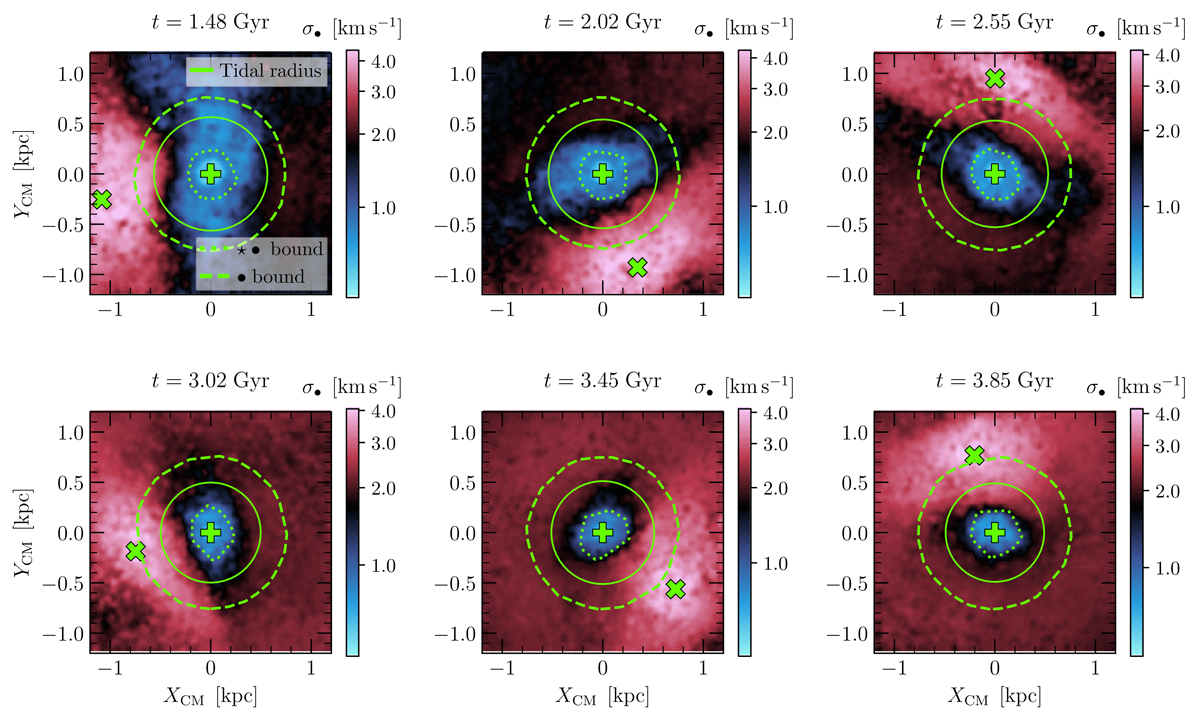Fig. 2.

Download original image
Dark matter shield: Velocity dispersion map of dark matter particles for GC5, projected in the X vs. Y plane and centred in the centre of mass of the globular cluster system. We display the last six pericentres of its orbit, where the tidal effects are stronger. The extension of bound globular cluster stars and bound dark matter particles are highlighted as dotted and dashed green lines, respectively, while the theoretical tidal radius, calculated according to Sect. 2.3, is displayed as a solid green circle. The maps are colour-coded logarithmically from blue (lower dispersion) to red (higher dispersion). The centres of Fornax and of the globular cluster are represented as a thick green cross and a plus sign, respectively. For this cluster, we notice that the empirical tidal radius, well traced by the blue region, remains always larger than the bound stars radii. This argues in favour of the dynamical presence of a dark matter shield, as illustrated in Fig. 1.
Current usage metrics show cumulative count of Article Views (full-text article views including HTML views, PDF and ePub downloads, according to the available data) and Abstracts Views on Vision4Press platform.
Data correspond to usage on the plateform after 2015. The current usage metrics is available 48-96 hours after online publication and is updated daily on week days.
Initial download of the metrics may take a while.


